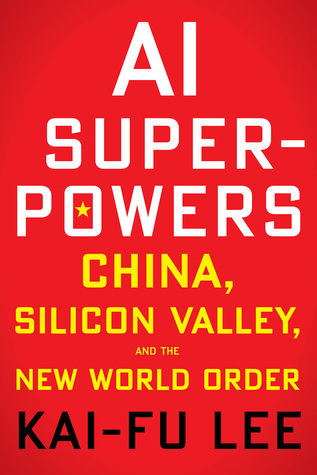Omkar Bhole, Research Intern, ICS

One significant cause of Sri Lanka’s current economic crisis is a shortfall in its forex reserves. This has been compounded by staggering increase in Sri Lanka’s overall external debt burden amounting to around $45 billion of which it owes $8 billion to China alone. Many experts also suggest that China’s debt-trap policy has actively engineered Sri Lanka’s economic collapse. Therefore, it is pertinent to examine Chinese investments in Sri Lanka to gauge its impact. Colombo Port City Project (CPCP) which was inaugurated by the President Xi Jinping during his state visit to Sri Lanka in 2014, is the largest FDI project in Sri Lanka and thus warrants a careful examination.

CPCP is an ambitious real-estate project with an initial investment of $1.4 billion and involves reclamation of 269 hectares of land near Colombo. This project is entirely financed and implemented by China Harbour Engineering Company (CHEC) with the Sri Lankan government being only responsible for providing all legal clearances and utility services. CHEC promises to establish a world-class city for entire South Asia by 2041 through creation of facilities for commercial space, retail space, hospitality, residential area and social infrastructure.
Impact on Sri Lankan Economy
CPCP is crucial for boosting Sri Lanka’s deteriorating economy. A report prepared by PricewaterhouseCoopers (PwC) estimates that this project will create more than 3 lakh jobs for both locals and foreigners. However, the 2021 Colombo port city economic commission act provides that salaries of those employed in port city will be paid in foreign currency. This may create an opportunity for China to promote the internationalization of RMB. Secondly, the amended 2021 act provides for 75% reservation of jobs for locals, but lack of skills among them can be a big concern. CPCP will bring about $8.7 billion FDI during its construction stage and approximately $1 billion FDI every year in its operational stage. The Sri Lankan government must maximize benefits for locals. Also, returns on 70% of FDI proceeds are estimated to be realized from the sale or leasing of property which may not generate much employment. Similarly, investments in the form of debt will further add to Sri Lanka’s already acute debt burden.
CPCP will also impact Sri Lanka’s Balance of Payments (BoP). CPCP will have a negative impact on BoP during the construction stage due to imports of construction materials and loan repayments. This loss is expected to be offset in the operational stage through tourism, logistics, IT and financial services, etc. and generate $6 billion of positive BoP. Lastly, this project will also cause a rise in Sri Lanka’s GDP and government revenue. However, this may not materialize fully considering huge tax concessions and other benefits offered for CPCP.
Environmental concerns
CPCP was blamed for a flawed Environment Impact Assessment (EIA) since its inception. This project would lead to several environmental issues like water and soil pollution, waste dumping, destruction of marine biodiversity, etc. This would also impact the fishing industry near Colombo, a principal income source for many locals. Supplementary EIA was also conducted in 2015 which estimated $10 million as an environmental cost of this project . However, the recurring environmental cost of this project is not considered in EIA which can be a huge factor while assessing the success of CPCP.
Sovereignty issues
Chinese companies are currently working on more than 50 infrastructure projects in Sri Lanka worth $11 billion. This is despite the fact that Chinese financial institutions charge heavy interest rates compared to the Western ones. Laxity in regulatory compliances imposed by Chinese institutions in contrast to other organizations might be one reason for their popularity. Similarly, China’s political support to Sri Lanka during allegations of human rights violations and corruption has also made China an attractive lender. China’s readiness for debt-equity swap such as in the case of Hambantota port puts China ahead of other global institutions. However, such lenient lending brings other disadvantages with it. The CPCP Concessionary agreement between CHEC and Sri Lankan government has promised 108 hectares of marketable land to China out of which 20 hectares will be given on free lease for indefinite period and 88 hectares will be given on lease for 99 years with a hold period of 35 years, effectively making it 134 years. This is similar to what Britain did with Hong Kong which China had opposed earlier. Also, Sri Lanka’s recent decision to temporarily default on its external debt may provide another opportunity for China to gain more stakes in CPCP. As the entire funding for this project is borne by a Chinese company, it will get priority in monetizing their projects over the Sri Lankan government. CPCP master plan has allocated the highest proportion of land to residential space which will be affordable mainly to high-net worth Sri Lankans and foreigners. This might deprive Sri Lankans from occupying these spaces and ultimately turn it into a foreign settlement. Moreover, if instability continues in Sri Lanka for long, there is a fear that this project might end up becoming a ‘ghost city’ due to lack of further investments.

Conclusion
CPCP has a great potential to transform Sri Lanka’s economy in the next few years. However, Sri Lanka has to reassess the cost at which this development has been taking place. Environmental issues have become more serious globally and hence, must not be neglected. On the other hand, Sri Lanka cannot afford to allow any foreign country to increase its foothold through such investments. Although there have been some false narratives regarding Chinese presence in Sri Lanka like the fake passport case, concerns behind such narratives cannot be dismissed. Considering Sri Lanka’s strategic position in the Indian Ocean, China may resort to military use of this space in future which may affect India’s position in this region.
Hence, Sri Lanka must be careful about the long-term impact of such Chinese investments and restrict them turning into strategic gains for China. Sri Lanka’s recent efforts to seek help from IMF is a welcome step in that direction. With regards to CPCP, Sri Lanka has the advantage of a long gestation period during which it can make adequate arrangements to ensure that this project becomes a commercial success without affecting its own interests as well as its economy optimally benefits out of it.
The Blog was written under the guidance and supervision of Santosh Pai, Honorary Fellow, ICS. The views expressed here are those of the author(s), and not necessarily of the mentor or the Institute of Chinese Studies.
